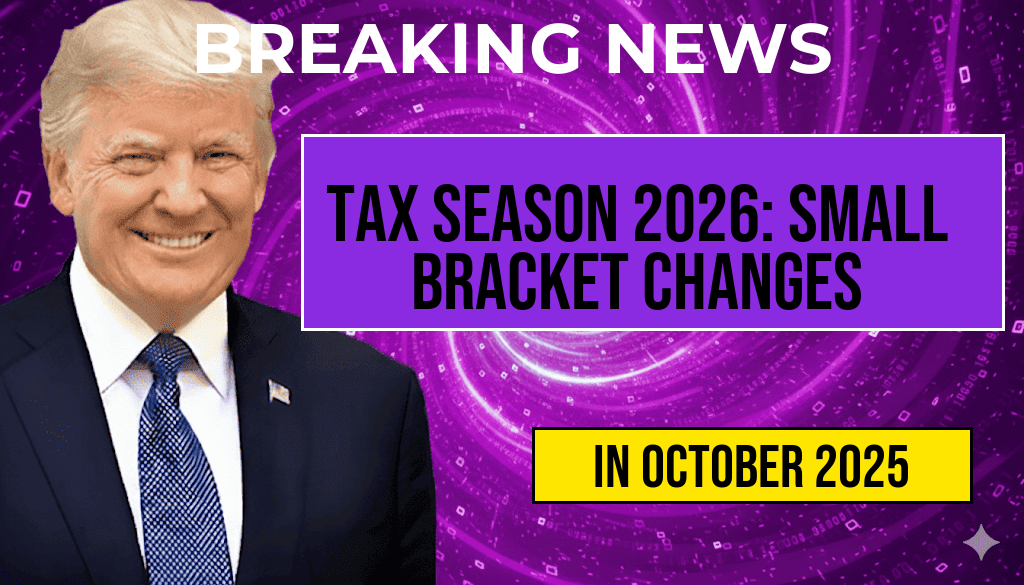Tax Season 2026: Bloomberg Projections Reveal Slight Bracket Changes That Could Save You Hundreds
As taxpayers prepare for the upcoming 2026 tax season, new projections from Bloomberg suggest subtle adjustments to income brackets could result in tangible savings for millions across the United States. While these changes are modest—primarily tweaks rather than wholesale overhauls—they may make a notable difference for middle-income earners and high earners alike. The revisions stem from inflation adjustments, designed to prevent “bracket creep,” where taxpayers unintentionally move into higher tax brackets due to rising prices and wages. With the Internal Revenue Service (IRS) expected to implement these adjustments, many Americans could see their tax burdens shift slightly, potentially saving hundreds of dollars depending on income level and filing status.
Understanding the Changes in Tax Brackets
Every year, the IRS updates tax brackets based on inflation, ensuring taxpayers aren’t pushed into higher rates solely because of cost-of-living increases. For 2026, Bloomberg’s analysis indicates that the income ranges for various brackets will shift upward by roughly 1.2%, slightly less than the previous year’s adjustment. These incremental changes aim to maintain the same real tax burden amid inflationary pressures, but they also open the door for strategic planning for taxpayers aware of these modifications.
According to Bloomberg’s projections, the most significant change appears in the middle-income brackets, where even a few hundred dollars of additional income could remain taxed at lower rates. For example, the threshold for the 22% bracket is expected to increase from approximately $89,075 to about $90,225 for single filers—a difference that might allow some taxpayers to retain more of their income before facing higher rates.
Potential Savings for Taxpayers
While the adjustments are generally small, their cumulative impact can be meaningful. For instance, a taxpayer earning $85,000 annually could find themselves in a slightly lower effective tax rate than in previous years, especially if their income hovers near the upper limits of certain brackets. Over a year, these shifts could translate into hundreds of dollars in tax savings, particularly for those who itemize deductions or qualify for various credits.
| Tax Rate | Previous 2025 Bracket Range | Projected 2026 Bracket Range |
|---|---|---|
| 10% | $0 – $11,000 | $0 – $11,132 |
| 12% | $11,001 – $44,725 | $11,133 – $45,250 |
| 22% | $44,726 – $89,075 | $45,251 – $90,225 |
| 24% | $89,076 – $170,050 | $90,226 – $172,300 |
| 32% | $170,051 – $215,950 | $172,301 – $218,725 |
| 35% | $215,951 – $539,900 | $218,726 – $548,100 |
| 37% | $539,901+ | $548,101+ |
Impacts on Tax Planning and Deductions
Taxpayers who anticipate income near these new thresholds should consider adjusting their withholding or estimated payments accordingly. Strategic timing of income, deductions, or investment sales could maximize benefits under these minor bracket shifts. For example, contributing to retirement accounts or flexible spending arrangements before year-end might offset taxable income, especially for those approaching higher brackets.
Additionally, the inflation adjustments may influence eligibility for various credits, such as the Child Tax Credit and Earned Income Tax Credit, which are often tied to income levels. Ensuring accurate income reporting and planning can help taxpayers secure maximum benefits and avoid unexpected tax liabilities.
Expert Insights and Future Outlook
Tax experts emphasize that while these bracket adjustments are modest, they reflect ongoing efforts to keep tax policies aligned with economic realities. “Even small shifts can have ripple effects, especially for large groups of filers,” notes financial analyst Sarah Johnson. “Taxpayers should review their projected liabilities early and consider consulting with professionals to optimize their returns.”
Looking ahead, policymakers are expected to continue adjusting brackets annually, with some discussions around broader reform. However, for 2026, the main takeaway remains: being aware of these slight changes can help taxpayers plan better and potentially keep more of their earnings each year.
For more detailed information on upcoming tax updates, visit the IRS official website at irs.gov or consult reputable financial planning sources like Forbes at forbes.com.
Frequently Asked Questions
Question
What are the major bracket changes projected for Tax Season 2026?
Question
How could the new tax brackets potentially save taxpayers hundreds of dollars?
Question
Are there any significant deductions or credits expected to change in 2026 that could impact refunds?
Question
Will tax planning strategies need to be adjusted due to the bracket changes in 2026?
Question
When can taxpayers expect to see the official updates and guidance from the IRS regarding these changes?

Leave a Reply